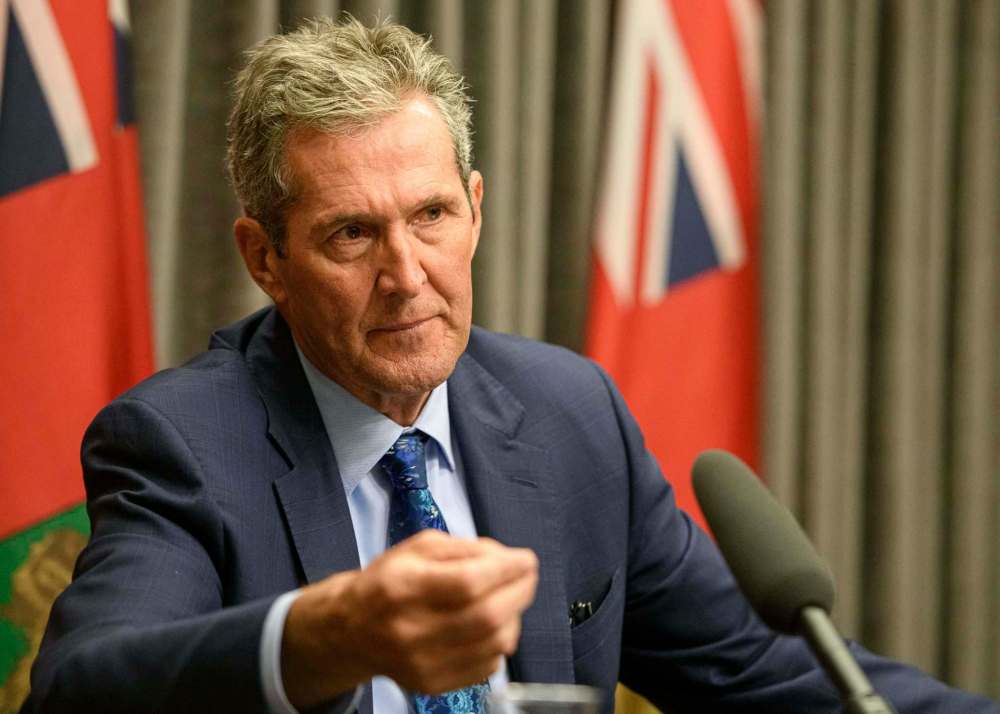Tories likely to follow giant leap towards balanced budget with a step or two in other direction
Read this article for free:
or
Already have an account? Log in here »
To continue reading, please subscribe:
Monthly Digital Subscription
$1 per week for 24 weeks*
- Enjoy unlimited reading on winnipegfreepress.com
- Read the E-Edition, our digital replica newspaper
- Access News Break, our award-winning app
- Play interactive puzzles
*Billed as $4 plus GST every four weeks. Offer only available to new and qualified returning subscribers. Cancel any time.
Read unlimited articles for free today:
or
Already have an account? Log in here »
Hey there, time traveller!
This article was published 27/09/2019 (1985 days ago), so information in it may no longer be current.
The only problem with slashing the size of the deficit as much as the province did last year is it’s going be tough for government officials to explain why the shortfall will likely be higher this year — and maybe next year, too.
Last year’s deficit came in at a surprising $163 million, according to the province’s public accounts released Thursday. That’s well below the budgeted shortfall of $521 million. It’s great news. The sooner the province stops borrowing money to finance its daily operating costs, the closer it will be to paying down debt and freeing up more money for front-line services (and cutting taxes). It’s a major accomplishment for a government that, just three years earlier, inherited a deficit of $932 million and a debt that was growing at about $2 billion a year.
Considering government is so close to balance, it’s tempting to assume they could be back in the black as early as next year. After all, what’s $163 million in a $17.4-billion budget? It’s less than one per cent.

But there were some unique reasons why the deficit fell so dramatically last year, many of which were due to one-time events. The stars probably won’t align like that anytime soon. Which means this year’s deficit, and maybe next year’s, could be higher.
Not only did the province avoid a major flood or other natural disasters in 2018-19, it benefited from higher than expected revenues from Manitoba Hydro and Manitoba Public Insurance. Revenues were $77 million higher than projected from what the province calls “government business enterprises.” Most of that came from a one-time sale of equities by MPI as it rebalances its investment portfolio.
Health spending was $215 million below budget. But more than half of that was due to accounting changes adopted by regional health authorities to bring them in line with public-sector accounting rules. (Health spending was still $103 million higher in 2018-19 compared to the previous year, despite repeated claims by opposition parties and public-sector unions that government has “cut” health-care spending).
There was a $25 million increase in federal transfers, due mainly to the timing of when housing agreement funding was accounted for. Lower interest rates cut debt servicing costs by $34 million. Government’s investment returns were $23 million higher than expected. And income and corporate taxes were $193 million above budget. Some of that may have been the residual impact of federal tax changes in 2016 that affected the timing of income reporting.
That’s not to say government’s ongoing cost-control measures weren’t a factor in reducing the size of the deficit last year. Getting labour costs under control has been one of the key factors in slaying the deficit. Salary and benefits costs within the public sector have been virtually frozen at $8 billion over the past three years. That’s due largely to reductions in the size of the public service (mostly through attrition) and more favourable contract settlements. Prior to that, labour costs were rising by about $300 million a year.

Those and other ongoing cost-controls did have an impact.
But many of the one-time events that drove the deficit down so sharply last year likely won’t occur again this year, or next. Which is why the province is still projecting a $360 million deficit for 2019-20. Economic growth forecasts have already been downgraded for this year since the 2019 budget was introduced. That could translate into slightly lower than expected taxation revenue. At this point, government would probably be happy to hit its original deficit target this year and shoot for a projected shortfall in the $200-million range for 2020-21.
Both would be higher than the $163-million deficit for 2018-19 and would likely raise a lot of questions.

Still, Premier Brian Pallister’s surprise pledge during the election campaign that the province would balance the books ahead of schedule by 2022 doesn’t appear in jeopardy. He wouldn’t have set that target without reliable projections from his officials that it could be done.
He may not have the luck he enjoyed last year to get there. And something like a massive flood could throw the plan off the rails. But a balanced budget by 2022 still looks very realistic.

Tom Brodbeck
Columnist
Tom has been covering Manitoba politics since the early 1990s and joined the Winnipeg Free Press news team in 2019.
Our newsroom depends on a growing audience of readers to power our journalism. If you are not a paid reader, please consider becoming a subscriber.
Our newsroom depends on its audience of readers to power our journalism. Thank you for your support.









